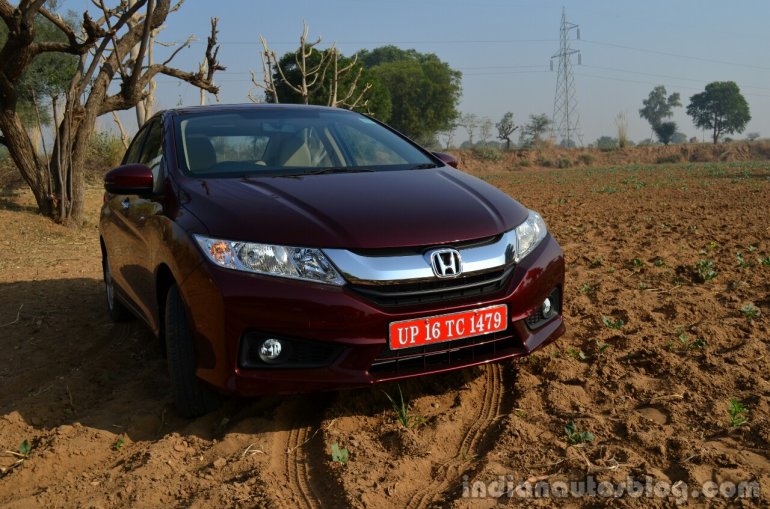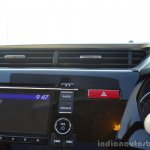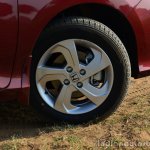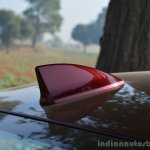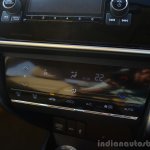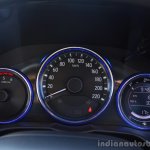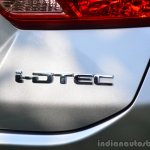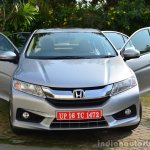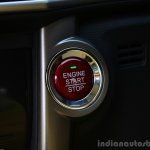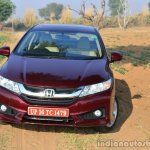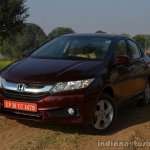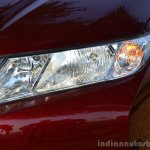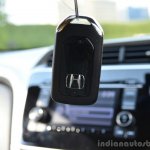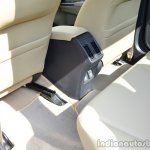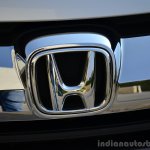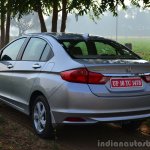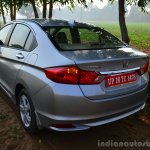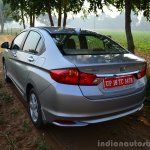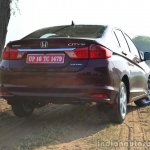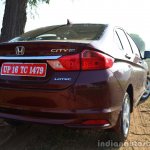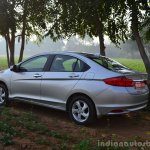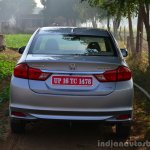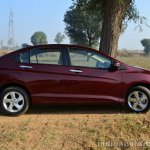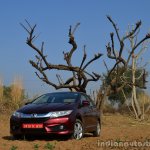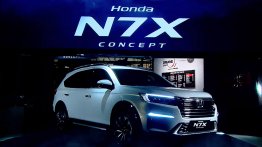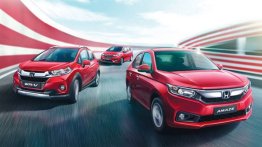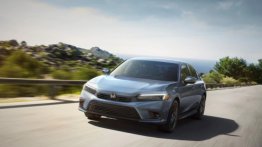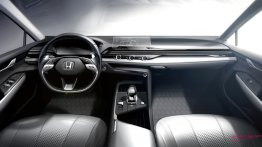Few cars in India have such a loyal following as the Honda City. Without my telling, you know that at some point in your life, you may have aspired to own a City.
For a car with this big a fan following, Honda’s engineers really need to bring out their best while moving to a next generation model. So, have they?
Exteriors:
The new City was one of the best kept secrets in the industry. As a result, I too waited with a bated breath at 12:30 PM on November 25th. For the next few hours, what followed was disappointment: After all this secrecy, is this it? A car that looks vaguely familiar to its predecessor?
Fast forward to December 9th when I saw it for the first time in Jaipur: That is a premium looking car!
These pictures do not do justice to the new City as I believe you should see it in person. Without getting into too much detail, I’ll describe the City’s exterior design as something really posh, really premium, really upmarket looking.
Honda has really hit the nail with this design. The target audience of the City has always been the matured crowd. And its the same set of people who would really appreciate the design of the car.
Before you make your judgements, you should really check out this car in person is my advice here.
Interiors and Build Quality:
The door handle on this top-end City is equipped with the smart-entry button. Once you’re sat on the perforated leather seats, you’re immediately greeted by a high quality steering wheel which could easily do duty on the Accord or CR-V. Looking further, the instrument cluster of the new City is lifted from the 2014 Jazz, on which its based. Depending on your driving style, the entire cluster alternates between a blue and green ambient color.
Stacked in the center of the dashboard is a rather small 5-inch display (it looks small comparative to the dashboard area). This 8-speaker audio system is capable of playing just about anything you throw at it and also comes with Bluetooth integration for your smart phone. The screen also doubles up as a display for the reverse camera and features a rear view and top view which makes parking effortless.
Bordering this screen is an aluminium-like material to break the all-black dashboard color. Overall build quality of the dash is much improved compared to the previous City, though it lacks the build quality of a VW.
Special mention needs to be given to the touchscreen-controlled automatic climate control system. The system is extremely responsive to user input and the capacitive buttons are large enough such that you don’t need to use your fingernail to press them.
Overall, I like the interiors of the new City and it quite easily beats the competition here.
The Rear Seat:
The new Honda City is the Mercedes S Class in this segment! With the front seat pushed all the way backward, the new City’s minimum legroom outbeats many car’s maximum legroom. And with the seat pushed all the way forward, the City is a 4.4-meter limousine.
While an Indigo XL/Nissan Sunny may offer such amounts of space, with the City, its also about the rear seat experience: Where do your hands naturally fall? Is the thigh support adequate? How reclined are the seat backs? What’s the view outside the window? Do you feel claustrophobic?
Your hands perfectly fall on the armrests, the thigh support could’ve been a bit better, the seat back is perfectly reclined and the window line is low enough for you to feel a sense of space.
Engine, Gearbox and Refinement:
This is perhaps where the City diesel falls short, but not as bad as the specs suggest. Power comes from the same engine as the Amaze and at 100 PS/200 Nm, its no different either.
While starting the car and in lower gears, the City is as noisy as the Amaze. Add to that, the clutch feels heavy and the gearbox is not as smooth as the Amaze.
However, the City diesel is not underpowered. Surprisingly, even though the engine has to haul a heavier weight, the City feels quicker and is faster than the Amaze. It’s no VW Vento/Hyundai Verna, but you’ll never feel the lack of power.
As far as the engine noise is concerned, there is some solace to be found in the higher gears. What was a noisy car in third gear, becomes rather well contained in fifth. In sixth gear, the City can do 100 km/h at 2,000 rpm and with your AC and music system ON, you would miss out the diesel clatter.
Within the gears, the City diesel makes for a great car to drive within the city. Power is accessible throughout the rev range, and the gear ratios have been chosen such that you don’t need to downshift frequently. The 1.5L engine, though it lacks outright power, is a very responsive unit and turbolag is at its minimum.
If its purely performance you’re after, the Vento and Rapid are clearly better cars. The City diesel will appeal to those who are tuned to driving in a relaxed manner.
Steering, Ride and Handling:
The steering of the new City, typical of all new Hondas, is light at city speeds and weighs up precisely at higher speeds. Its certainly better and more precise than a Verna, Vento/Rapid, yet falls short of the Fiesta’s. Overall, I’ve no serious complaints about the steering though.
Typical again of new Hondas, the City’s ride feels a bit stiff at all speeds, and even medium-sized bumps and potholes filter through the cabin. The upside to this is that the City feels sure-footed and composed, even at high-speeds.
Though body roll is present while taking tight corners, the City is one of the better handling cars in its segment.
Fuel Efficiency:
The 1.5L diesel from the Amaze produces the same power in the City, lugs a heavier weight, feels faster and quicker, and yet manages to deliver better fuel efficiency. At 26 km/l, the City diesel is India’s most fuel efficient car.
Driving it flat out, we managed 14 km/l, while using a light foot in traffic conditions saw the figure rise to 18 km/l.
Should I buy the City diesel?
Honda launching the City with a diesel engine is a bit like Porsche launching the 911 with electric power steering: Enthusiasts maybe outraged, but it was something bound to happen sooner or later.
If you’re a Honda enthusiast, or an existing City driver wishing to upgrade, chances are you might still favor the expensive fuel variant and not this diesel.
However, if you’ve driven diesel cars before and are used to the noise, the City diesel is a brilliant all-rounder in its segment.
While I’ll still put my money on a Rapid/Vento for its performance, for all other reasons, the City is the new king of the segment.
Meet the new boss, he’s nothing like the old guy!
Price:
Honda will announce the price of the car only towards its launch in January 2014.
My expectation is that the base City diesel would cost INR 9.5-9.7 lakhs (ex-Showroom, New Delhi). This is how I worked the pricing. The third gen City base variant (EMT) costed about INR 8.1 lakhs. Add about INR 50,000-60,000 to that price to arrive at the base price of the new City petrol. Add a further INR 1 lakh more for a diesel model.
If Honda prices the car below this, there you go - a brilliant all-rounder at a good price. Anything above 10 lakhs for the base City diesel seems a bit overpriced in my opinion.
To read the technical details of the new City diesel, click here.
What I Like
- All-rounder appeal
- Brilliant space
- Diesel fine tuned for city driving conditions
- Efficiency
What I Dislike
- Engine noise could've been better contained
- An automatic transmission would find many takers
